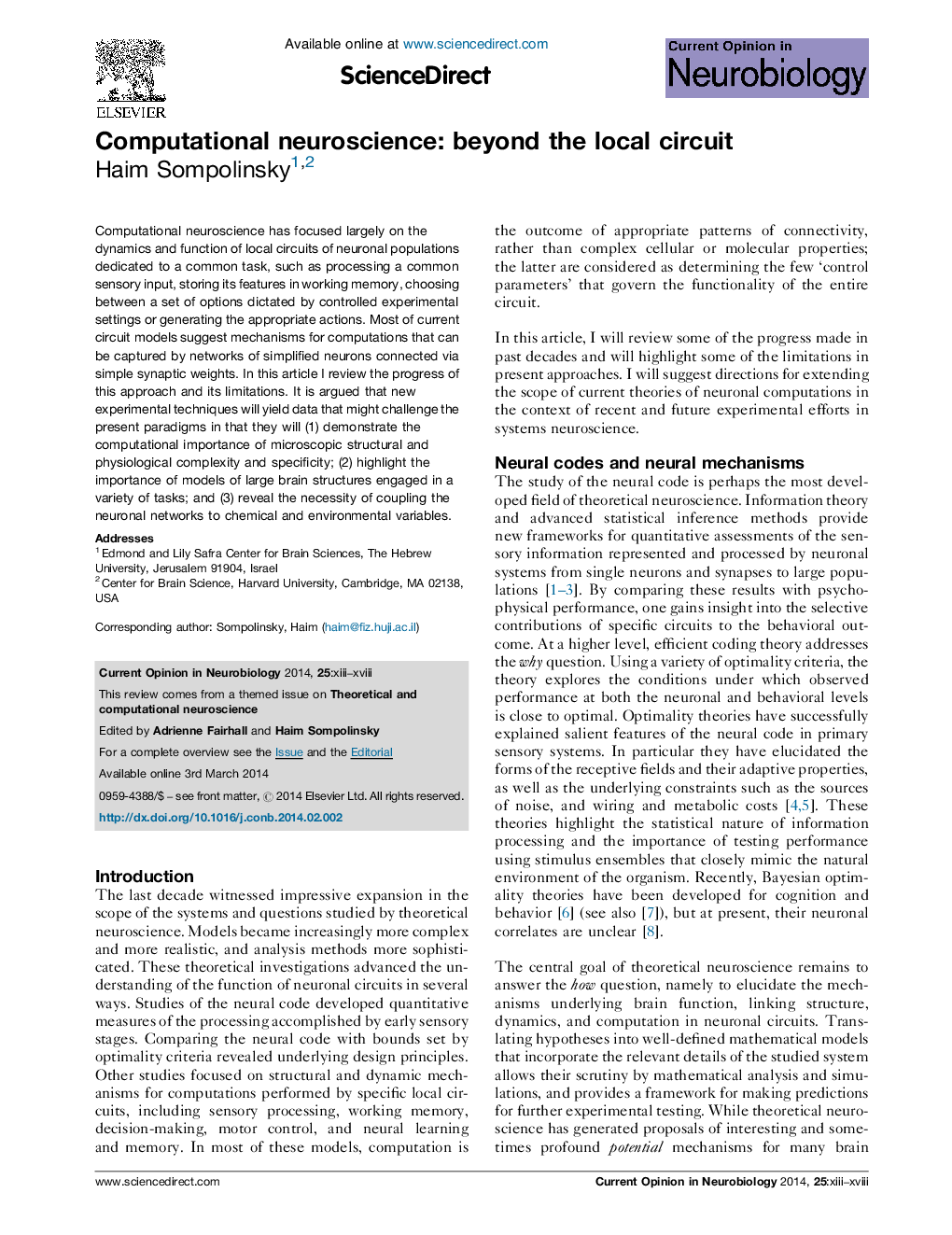| Article ID | Journal | Published Year | Pages | File Type |
|---|---|---|---|---|
| 6266515 | Current Opinion in Neurobiology | 2014 | 6 Pages |
â¢Computational neuroscience has elucidated the function of local neuronal circuits.â¢Circuit models propose mechanisms for sensory processing, cognitive functions, and behavior.â¢New methods are required to determine the appropriate levels of model complexities.â¢Future models should study larger heterogeneous networks with multiple functions.â¢They should also address interactions with chemical networks and environmental states.
Computational neuroscience has focused largely on the dynamics and function of local circuits of neuronal populations dedicated to a common task, such as processing a common sensory input, storing its features in working memory, choosing between a set of options dictated by controlled experimental settings or generating the appropriate actions. Most of current circuit models suggest mechanisms for computations that can be captured by networks of simplified neurons connected via simple synaptic weights. In this article I review the progress of this approach and its limitations. It is argued that new experimental techniques will yield data that might challenge the present paradigms in that they will (1) demonstrate the computational importance of microscopic structural and physiological complexity and specificity; (2) highlight the importance of models of large brain structures engaged in a variety of tasks; and (3) reveal the necessity of coupling the neuronal networks to chemical and environmental variables.
